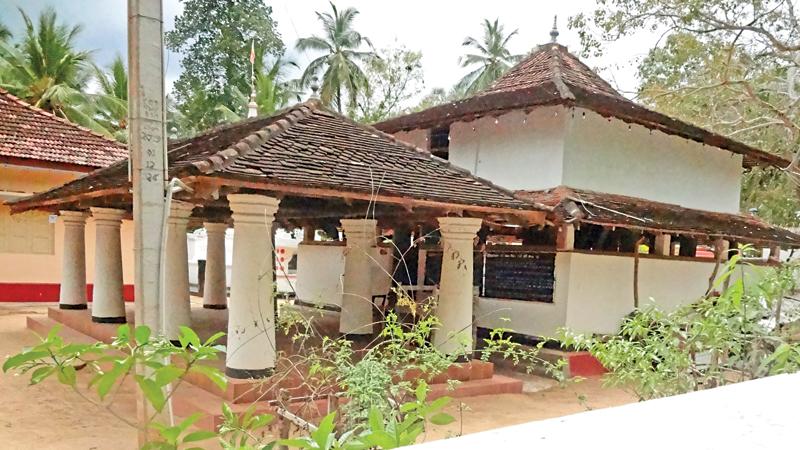
The Budumuttawa Tempita Raja Maha Vihara is an ancient temple about one mile away from the Nikaweratiya town in Magal Othota Korale in the Kurunegala district.
The temple has been in existence since the Anuradhapura period and has artefacts belonging to Anuradhapura, Polonnaruwa and Kandyan eras
Legend has it that the Stupa at the temple had been built enshrining the pearl necklace (muthu hara) that was given to Kisagothami by Prince Siddhartha hearing the “Nibbutha Pada” spoken by her. The necklace was carried to Sri Lanka by two princes named Danda Sakya and Thruna Sakya.
Chief Incumbent of the temple Ven. Dambagolle Dhammarama Thera said that it has been mentioned in the “Sirilaka Kadaim Potha” about worshiping the stupa enshrined with “Mutta Dhathu” of the Buddha. The name Muthuhara Vehera has evolved into Budumutta Vehera over time.
Archaeologists H.C.P. Bell, A.M. Hocart and Prof. Senarath Paranavithana had conducted research at the site.
Ven. Dhammarama Thera said that more treasures of the historical place still remain underground waiting to be dug up.
Three ancient inscriptions written in a mixture of Pallawa and Tamil script have been discovered from the temple site. Two inscriptions written in the fifth year of King Jayadeva’s reign (1110-1152 A.D) are on the pillars of the Tempita vihara built during the Kandyan era. The inscriptions have been deciphered by Prof. Paranavithana.
Three sides of a granite pillar have been used for the first inscription. The inscription has been made by the officers of a person called Weerabahu. The second inscription written on a single side of a pillar describes a donation to the Easwara Devalaya in Mahagallaka.
The third is a slab inscription with most of the letters eroded due to exposure to elements for hundreds of years. Currently this is mounted to the wall of the hall named “Sangamitta Shalawa” A Professor at the Peradeniya University has read these and dated the inscription to the Polonnaruwa era. The inscription describes donations by a trade association to a devale.
The Chief Incumbent of the temple has a copper plate dated 1763-64 given by King Keerthi Sri Rajasinghe (1747-1781). The plate states that the temple had been in a dilapidated state and the king had renovated the temple and handed it over to the bhikkhus.
The bhikkhus’ residence (Sangawasa) at the vihara is quite old and probably dates back to the Kandyan era. There are two entrances to the building at the front and rear ends. Both doors cannot be locked from outside. According to the Chief Incumbent, this is an indication that the temple should not be left unattended at any time and someone should always be at the temple.
The temple was declared as a protected archaeological site on August 12, 1968 by the Gazette No. 14708.

